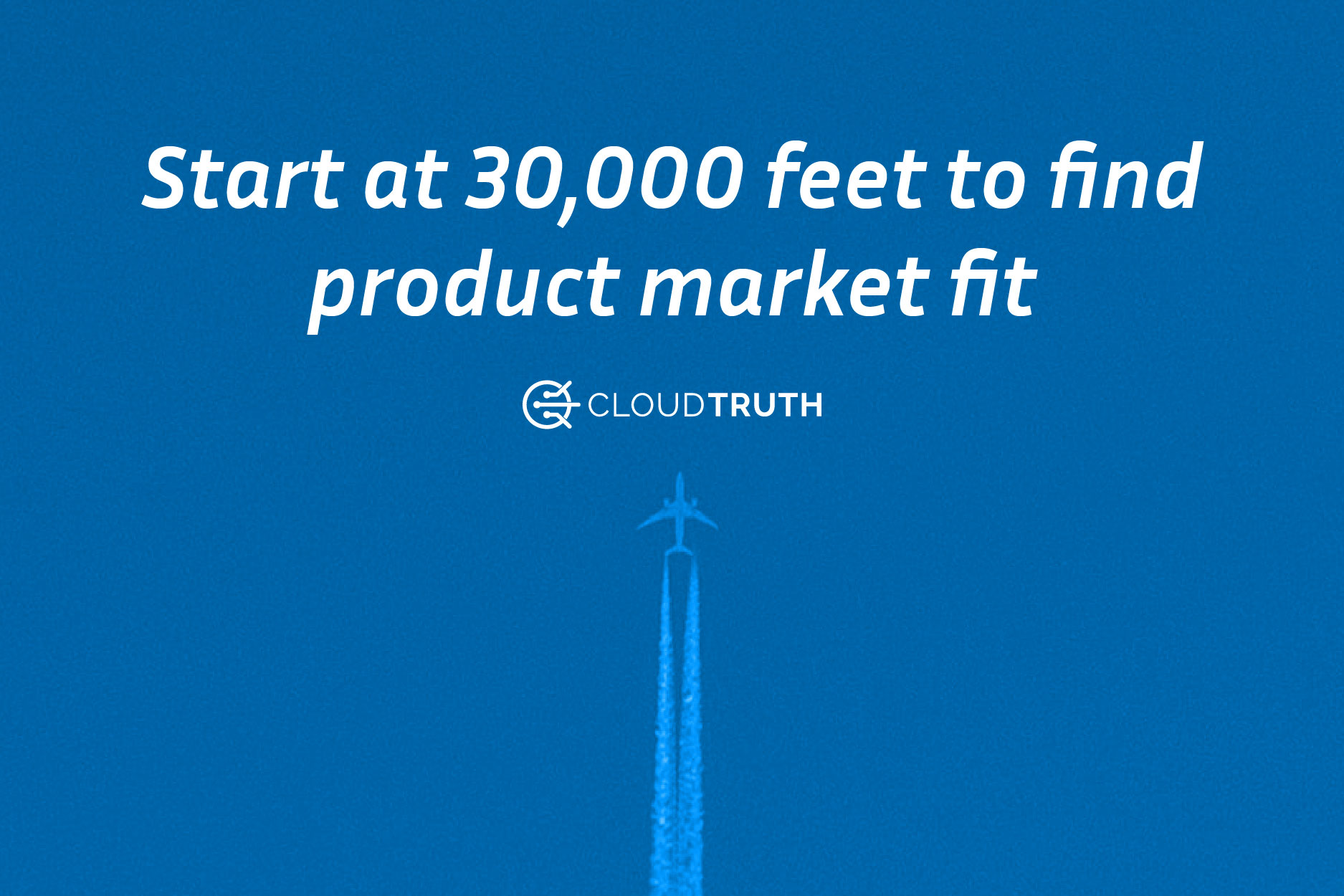Especially in the startup world, it’s well-known that product-market fit is one of the most essential ingredients of a successful company. To launch a sustainable business, it’s vital to identify both a market niche and a specific product approach that can effectively meet the needs of that market. But how exactly to get there isn’t always obvious.
One of the biggest challenges when it comes to finding product-market fit is managing the transition from a 30,000 foot view — that is, a broad, high-level understanding of a potential opportunity — to granular, actionable product feedback. How soon should you start soliciting input on specific product and feature ideas, rather than just gauging general interest? How much validation is necessary at each stage before you decide to settle on a direction, narrow your focus, and move forward?
These questions don’t have easy answers. If you cut the early stages of exploration short, you’ll likely miss essential insights and could potentially end up pursuing a suboptimal direction for your project. But get stuck in indecision and high-level conversations, and you’ll never get the data you need to start building a real business. The key is to make sure you remain flexible and adaptable, and that you take the right approach at the right time.
At CloudTruth, we’ve spent over a year honing in on our product and market. Back in early 2020 our team had a rough sense for the type of system we wanted to build and the sorts of customers who might be interested in what we had to offer, but our ideas were still fairly vague. We began conducting early stage interviews focused not on determining the specifics of our product design, but simply on proving or disproving our overall direction.
Over the course of several months, we interviewed over a hundred cloud engineering leaders and DevOps practitioners in order to start to better understand their needs and pain points. We learned about the challenges they faced around cloud provisioning and configuration management, and we started working on a prototype with basic functionality based on this feedback. In this early phase, our goal was simply to get that extremely high-level input: Were the problems we were interested in solving relevant to our potential customers, and was our general approach to solving those problems in line with those customers’ needs.
As we began to get that initial validation, we slowly narrowed our focus on a specific product direction and transitioned towards a more tactical, targeted approach to customer interviews. Through the spring of 2020, we conducted another hundred interviews, and we noticed that those interviews seemed to be pushing us in a somewhat counterintuitive direction.
This was a critical moment. After careful analysis, we realized that we had been misinterpreting the feedback customers had been giving us. While these interviews had elucidated a real pain point, it became clear that it was in fact a false positive: an issue that was important, but not significant enough for anyone to spend any real time or money addressing.
As a result, we ended up re-expanding the scope of our interviews and ultimately ended up pursuing a different direction than we had anticipated. Importantly, while this may seem like an unfortunate detour, decisions like these are actually an essential component of an effective product-market fit process. No matter your industry or product idea, you’re bound to get conflicting feedback, false positives, and false negatives. The key is to recognize those situations, act when necessary, and avoid letting them derail your growth.
By the end of the summer of 2020, we had completed 400 interviews. At this point, we had high confidence in the direction we were settling on. We began developing a more and more well-defined understanding of our product vision, building out increasingly detailed prototypes, and then testing those prototypes through increasingly focused customer interviews. As we progressed, our conversations with customers shifted from high-level discussions to detailed product feedback sessions, and then eventually, they turned into beta customer recruiting opportunities.
Today, we’ve converted three of those interviewees into early access customers. We’re continuing to add more functionality to our product, and we’re leveraging the vast data set (and network of enthusiastic early adopters) that we built over the past year and a half to continuously improve both our customer acquisition and product development strategies.
Of course, we’re only at the beginning of our journey. There’s still a long way to go, and still much left to learn about our customers, their needs and requirements, and how we can best position ourselves to meet those opportunities. But our process so far has given us a solid foundation on which to grow. Starting with the broadest possible mindset and slowly narrowing in by soliciting increasingly specific feedback has enabled us to identify a real market need and a strong product direction to pursue — and we’re making progress towards that vision every day.
To learn more about the product we’re building, take a look at this recent blog post on the CloudTruth approach to managing complex cloud configurations. And if you’d like to try it out for yourself, click here to sign up for our early access program today!
Our bite-sized newsletter with DevSecOps industry tips and security alerts to increase pipeline velocity and system security.


